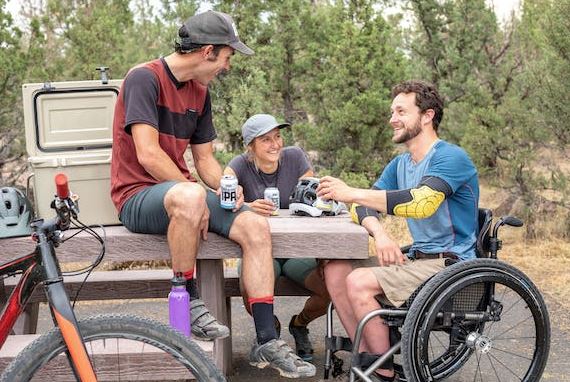As a journalist, I’ve had the privilege of delving deep into various topics. Still, I have yet to hit as close to home as the world of mobility solutions. You see, I’ve had a front-row seat to a transformative journey that shaped my understanding of health and independence and my appreciation for the power of innovation.
Let’s face it: life throws its fair share of challenges. For my family members, limited mobility became a daily hurdle. It began subtly – the occasional stiffness, a little joint discomfort, nothing unusual. But over time, those challenges accumulated, casting shadows over their once vibrant life. As their mobility declined, so did their overall health. Muscles weakened, and the simple act of moving from one room to another became an arduous task. Independence slowly slipped away, leaving behind a growing sense of dependence.
Solutions, Accessibility & Inclusion
Enter mobility solutions – the unsung heroes in this narrative. Stairlifts, mobility scooters, and disabled ramps – these unassuming devices heralded a resurgence of independence. Take stairlifts, for instance. My family members were game-changers. These unobtrusive machines glided gracefully up and down the stairs, offering physical support and a newfound sense of freedom. Climbing stairs no longer posed a risk; each ride was a testament to their resilience.
Mobility scooters soon followed suit, offering a mode of transportation that felt like a breath of fresh air. My family member is no longer confined to the house; they can explore the neighbourhood, visit friends, and embark on shopping adventures. The simple pleasure of feeling the wind in their hair and the sun on their face was an emotional milestone.
Amidst these triumphs, there was an underlying theme – accessibility. Access to public spaces, homes, and workplaces is not a privilege but a fundamental right. Witnessing my family member’s experiences highlighted the urgency of this matter. It’s a reminder that inclusion and well-being go hand in hand. Ramps designed for wheelchair users and those with mobility aids played a pivotal role in creating an inclusive environment. They weren’t just ramps; they were pathways to acceptance and dignity.
Specialists and The Ongoing Narrative
In this journey, specialists like Obam emerged as trusted allies. They weren’t just providers of mobility solutions but partners in pursuing independence. Their expertise ensured each solution was tailored to individual needs, making the transition smoother and more effective.
As I look back on this remarkable journey, I’m struck by the ongoing narrative – one of resilience, innovation, and the enduring spirit of the human will. The story reaffirms the profound connection between health and mobility solutions. Every advancement, every device, every well-placed ramp is a testament to our commitment to improving the lives of those facing mobility challenges. It’s a journey with no end, only continuous progress towards greater independence, improved health, and enhanced well-being.
In sharing this short story with you, I hope to shed light on the incredible impact of mobility solutions in fostering a better quality of life for those who need them most. After all, isn’t that what life’s all about – helping one another along the way?




